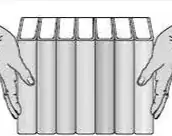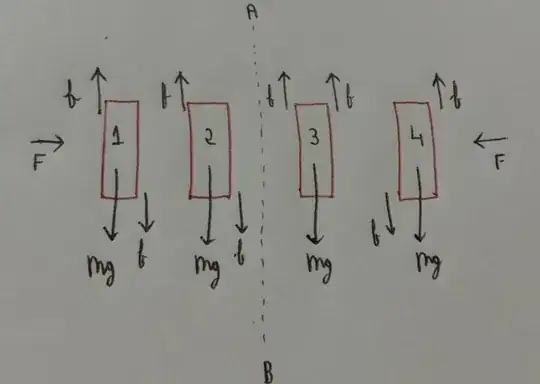An even number of books (say four) are held in the manner shown in the figure. It is obvious that if we apply a large force inwards, we can increase the normal force, and hence the friction which keeps the books in equilibrium. Assume all the books are identical.
On considering the equilibrium of the books individually, two problems arise when showing the direction of friction acting on the books two and three. (consider figure)
F denotes force applied and f denotes the friction force between the books which may or may not be same between all the books.
The problems:
- The situation is symmetrical about the line AB hence, the free body diagram on the left side of AB must be same as that on the right side of AB.
Thus the friction between the book 2 and 3, I believe, must act in the same direction. However such a thing would violate Newton's third law that friction must act in opposite directions on the two surfaces in contact.
- Neglecting the fact that the situation is symmetrical (as I have done in the figure), equilibrium is not possible for both the books 2 and 3 simultaneously as the net upward force balancing weight for both is different.
My questions:
- Am I doing something horribly wrong?
- Does it mean that no friction acts between books 2 and 3?
NOTE: Such a problem arises only when even number of books are involved.

